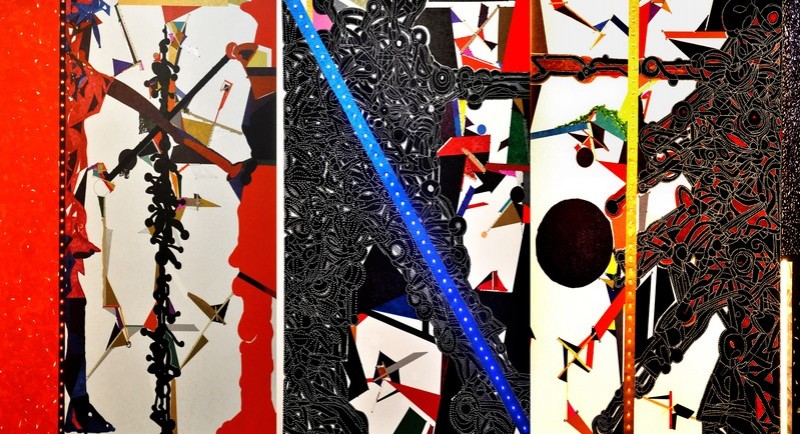Activating a Public Space: An Airport Art Museum

06 Jul, 2020 | 04:07 PM
![]() 1511
1511
https://puamsab.princeton.edu/2018/08/activating-a-public-space-an-airport-art-museum-anoushka-mariwala-21/
I have always loved airports. I love their largeness, their gentle, safe chaos, and the persisting predictability of everything that happens inside of them. It is curiously calming to be indistinguishable amongst eddies of travellers and airplanes, at the centre of this space between separation and assimilation. However, this summer made me realize how much potential public spaces like airports have, and exactly how much more they can be.
My internship at the Jaya He GVK New Museum, an art museum within the Mumbai International Airport, played a central role in altering how I now think about art – through the lens of how one can interact with it, who does, and the potential that lies within those interactions. Owing to my growing interest in architecture, I spent a lot of the last year interested in structure and studying how best to fill space, but over the last nine weeks, I learnt the value of the space in itself, and how structure can function simply to support pre-existing space.
At the Mumbai airport, the design-led museum, which forms one of South Asia’s largest public art programmes, uses art to activate the latent airport space, and provide meaning to a space previously associated purely with transit and functionality. Site-specific, commissioned artworks juxtapose centuries-old restored artefacts in a massive heterogeneous celebration of Indian arts and crafts. It is the subcontinent, splayed out, abstracted, and aestheticized: homage to the creative past and a means to cement the way for India’s artistic future on a global platform. Despite growing up surrounded by Indian art, it was here that I was exposed to heritage crafts and artistic techniques from all four corners of the country, the current state of artistic practices, and countrywide attempts to revive and reinvent them. Moreover, I shared all that I had learnt on the guided tours that I had the opportunity to conduct.
Interacting with visitors – since for that half-hour, they were visitors first and travellers second – were probably some of the most enriching experiences I had at the museum. I loved watching them, even if for just a moment, lose themselves in this space they happened to chance upon rather than deliberately visit. For me, those moments were some of the most powerful indicators of how the museum aims to democratize art through spontaneous interactions. The consumer is at the forefront of this endeavour, the most vital component of the miles-long exploration. I was struck by the persisting lack of ownership of the art displayed – despite involving some of the country’s foremost artists, the art here defers to entire histories, cultures, and practices rather than to individuals. By interacting with the art, this consumer invariably becomes a part of a transitory airport community: one whose members are all bound by this wonderful shared experience.
Unlike other airports, this one rejects the predictability I usually find solace in in favour of spontaneity. Unlike most other places, here, art occupies a sine qua non position in creating a place, one that is distinct and genuinely enjoyable to occupy. In this space of such constant flux, art helped me establish a sense of space, and more importantly a sense of self, and one that I was deeply grateful for.
WHAT YOU CAN DO IN CSIA AIRPORT:VISIT THE JAYA HE MUSEUM

India’s Largest Art Museum

Jaya He Audio Visual Guide app opens a treasure trove @ MIAL


Comments
tst comment
Ashwathi Pilankar | 06 Jul, 2020">
Test | 03 Oct, 2022">
Test | 03 Oct, 2022Leave a Comment